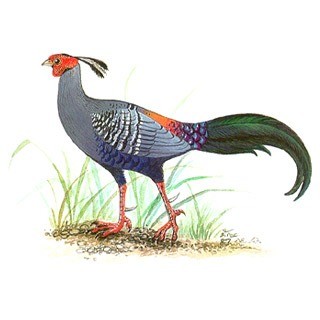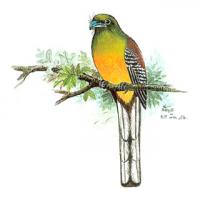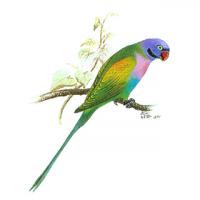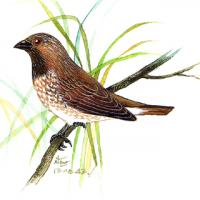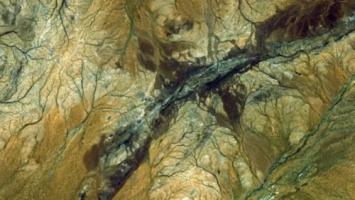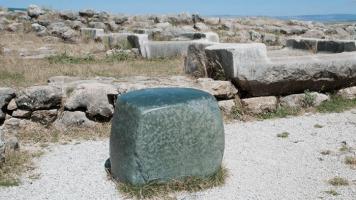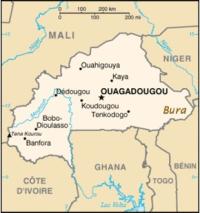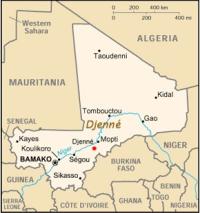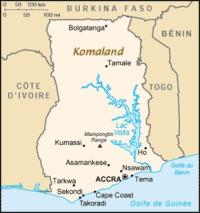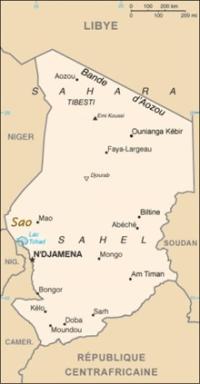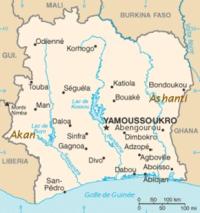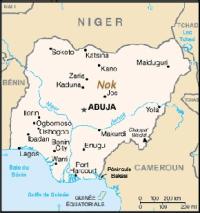Gray-breasted Prinia (Prinia hodgsonii)
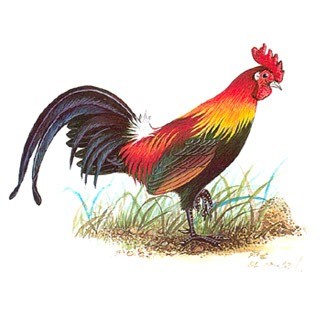
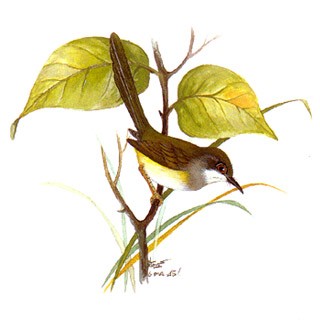
Order: PASSERIFORMES
Family: SYLVIIDAE Old World Warblers
Scientific name: Prinia hodgsonii
English name: Gray-breasted Prinia
Characteristic: Size 12 cm. A very small slender bird with thinner bill; forehead , crown, nape to upper back brownish grey; lower back and wings darker brown; throat white; breast grey and belly yellow; tail feathers brown, each tipped with greyish white. In breeding season, the whole body plumage will become more intensely coloured. Both sexes are similar in general appearance.
Distribution: Pakistan, India, Sri Lanka, Nepal, Bangladesh, Southwest China, Myanmar, Thailand, Laos, Cambodia and Vietnam. This bird is found almost throughout the country, except in the central and southern parts.
Habitat: Grass fields, scrub forest , dry dipterocarp forest, secondary growths, bamboo forests, deserted areas and agricultural areas, from the plain to the high altitude of 1,500 m. In Sakaerat forest, they inhabit the thickets of bamboo grasses which are the dominant undergrowth in dry dipterocarp forest; also in roadside tussocks and in forest plantations.
Habit: An extremely active bird, mostly keeps in small movable groups that skulking through grass thickets, calling and jerking their tails up-and -down incessantly. Their main diets are insects and spiders, but also sipping nectar from flowers. This bird has a weak flight flying almost touching the grass tops for a short distance. Breeding takes place between April and August, when they will be seen in pairs; nesting in dense vegetation and made by folding the rims of a large green hanging leaf together into a cone-shape structurs, then lined with grasses and plant fibers; it is placed about 50-90 cm. above the ground; a usual clutch is 3-4 eggs and the incubation period is 10-11 days.
Status: An abundant resident bird in Sakaerat forest. Also legall protected as a protected wild animal.









